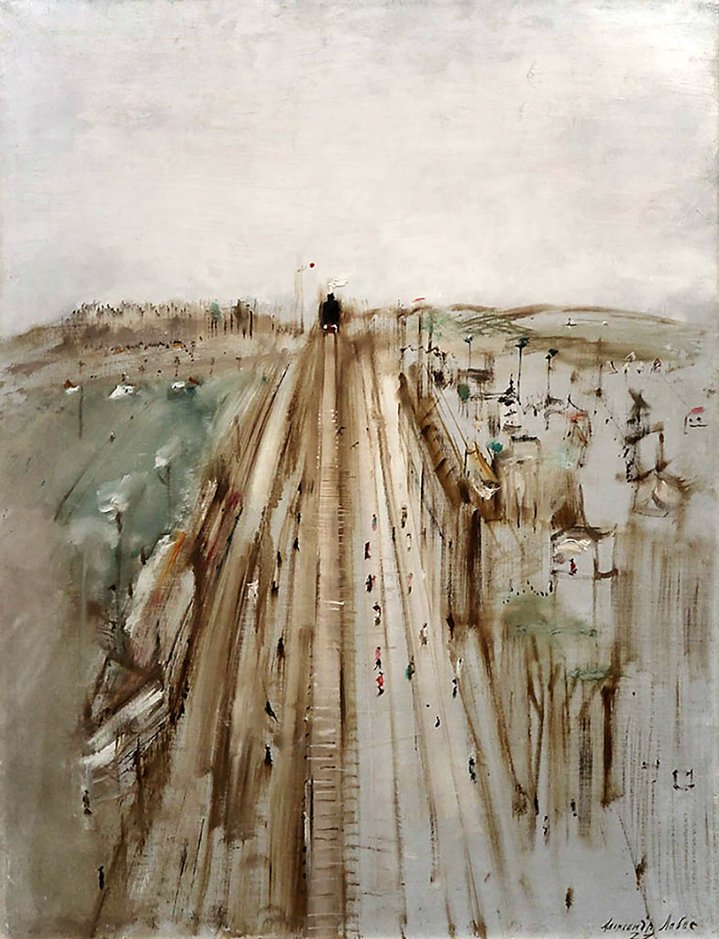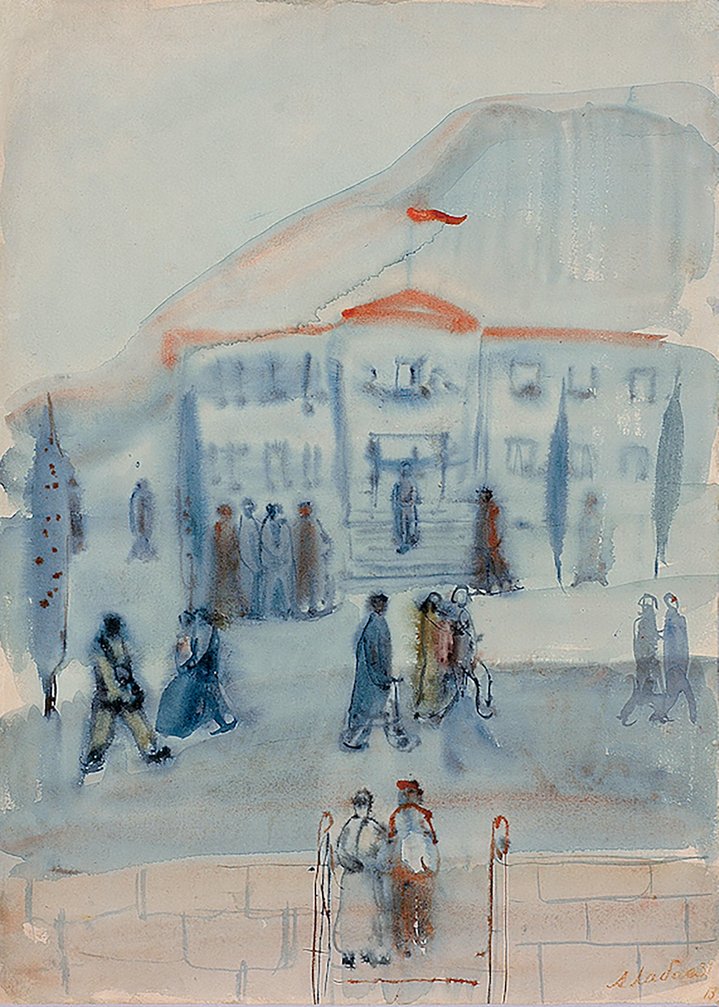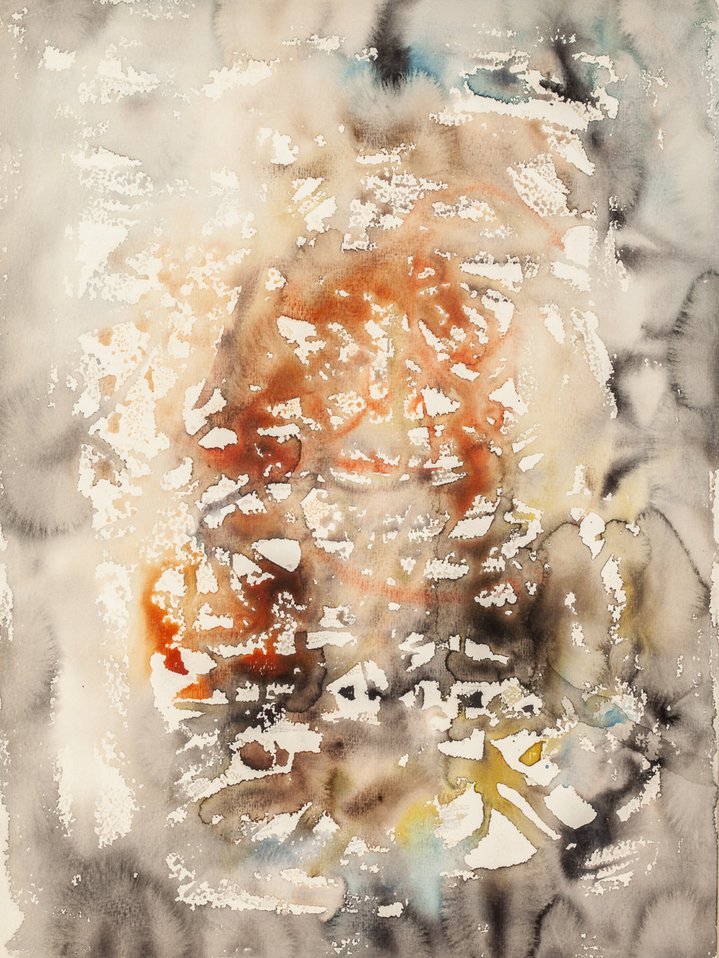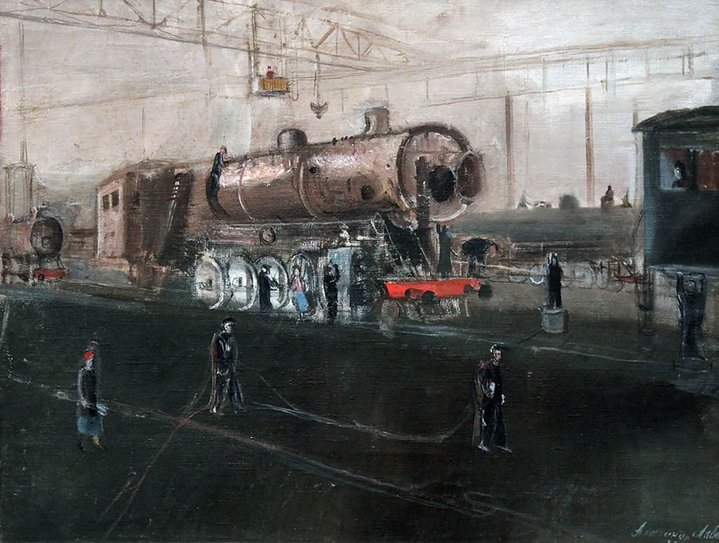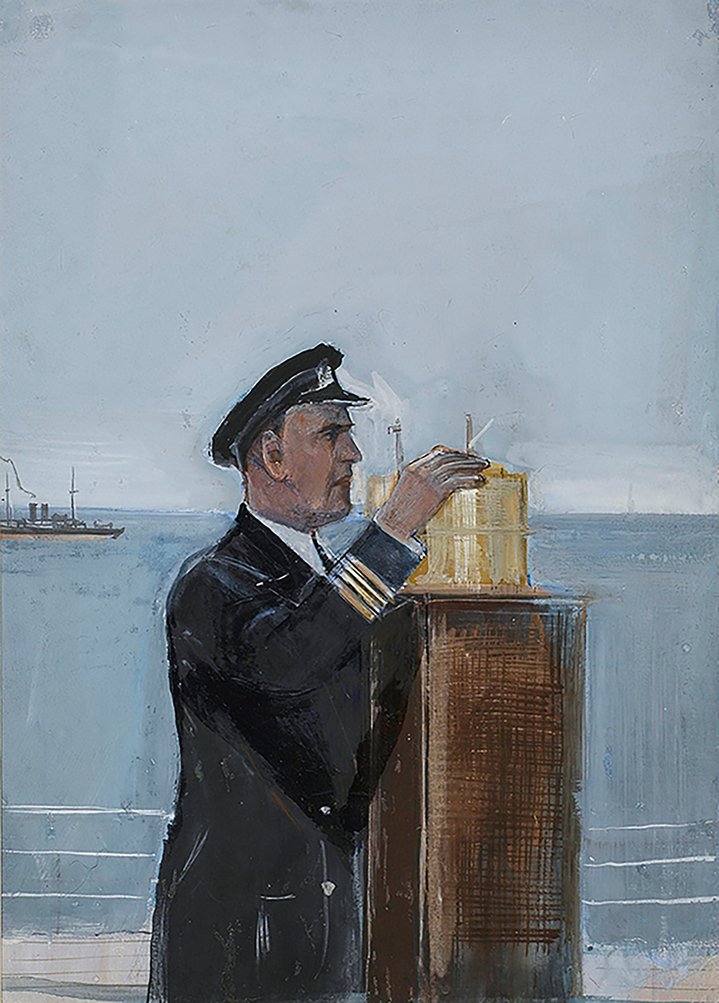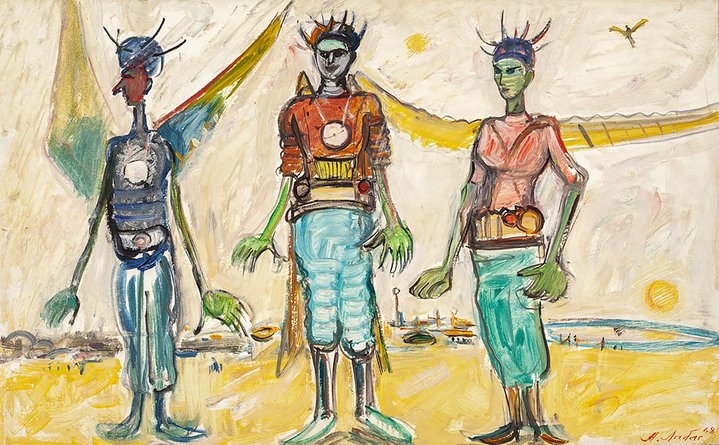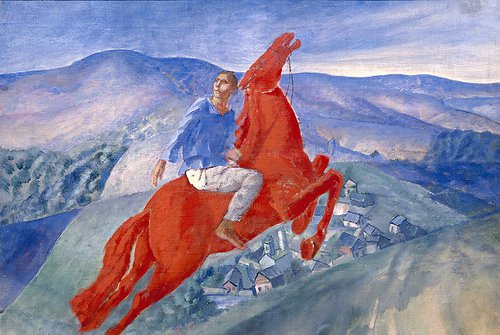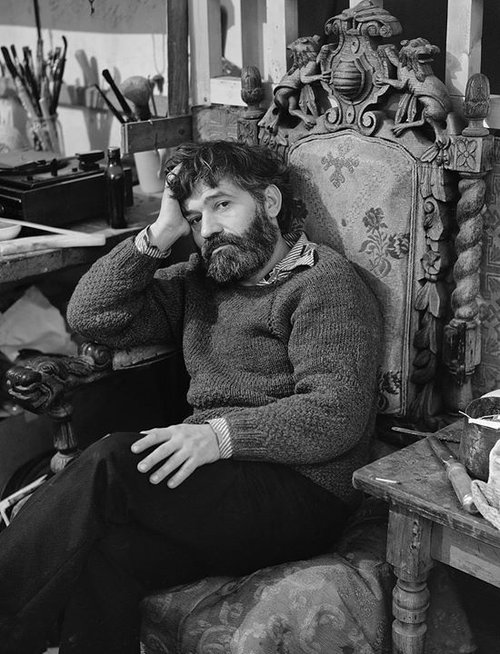Cosmic visions of Alexander Labas
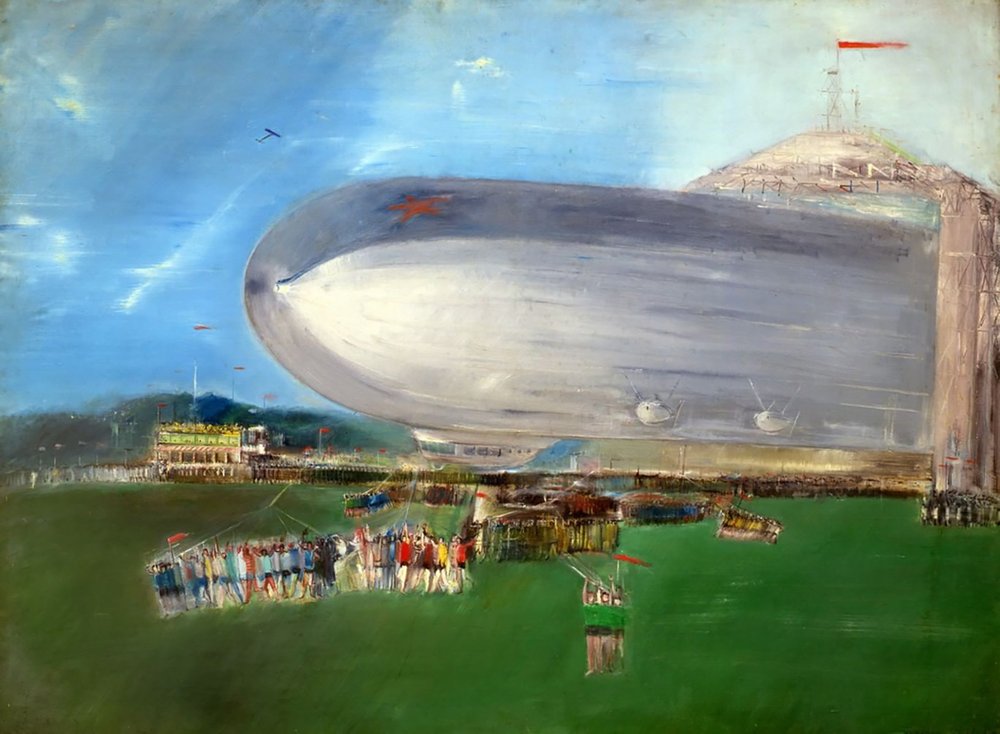
Alexander Labas. Blimp, 1931. Oil on canvas. The State Russian Museum
An exhibition in St. Petersburg shows a lesser-known part of the oeuvre of a Russian artist who was mentored by Avant-Garde titans and once labelled a 'formalist'. An avid admirer of technical progress, in his latter years he envisioned a surreal world populated by grotesque extraterrestials.
Alexander Labas (1900–1983) was fascinated by flying. Zeppelins and planes taking people up into the sky or escalators bringing them down below the surface of the earth to subway trains were his favourite subjects in the 1920s and 1930s. The artist was born in a Jewish family in Smolensk at a time when the world was largely still horse-driven. He trained as a painter from the age of six, and his mentors at the VKhUTEMAS, Moscow's legendary school of Avant-Garde art were Kazimir Malevich (1879–1935), Vassily Kandinsky (1866–1944) and Aristarkh Lentulov (1882–1943). His formative years coincided with the 1917 Bolshevik revolution and Civil War in Russia. A new world was being born in front of his eyes, supposed to be a world of freedom and technical progress where the future seemed bright and possibilities endless – a world in which humans literally could fly. This was the era when Konstantin Tsiolkovsky, a visionary Russian philosopher and scientist laid the foundations of space travel in his theoretical works and his first sci-fi films such as Aelita, with costumes designed by Aleksandra Ekster (1882–1949), appeared on the screens of 'electric theatres', early cinemas. Labas's interest in the technicalities of flying was not merely theoretical. He booked a roundtrip on one of the first passenger flights in Soviet Russia, connecting Moscow and Kharkiv (now in the Ukraine) as his granddaughter Alisa Labas mentioned at the opening of the artist's exhibition at the Museum of St.Petersburg Art of 20th–21st centuries. It was a risky endeavour at the time, as the pilot had to make two emergency landings during the outbound flight, and most of Labas's fellow passengers chose to return to Moscow by train.
At first his romantic enthusiasm was in tune with the times. His art was appreciated by the Bolshevik authorities, who turned to the Avant-Garde artists in search of an aesthetic identity for the nascent communist state. Labas got a teaching job at VKhUTEMAS, designed sets for Soviet theatre performances and decorated the USSR pavilions at international exhibitions in Paris and New York. He was among the founders of OST (the Society of Easel Painters), an influential artist union at the time. Yet, the fleeting love affair between the Avant-Garde and the communist regime ended quickly, as the party leaders realised that a traditional figurative style was better suited to their propaganda purposes. The doctrine of Socialist Realism prevailed over radical experiments. Like many of his peers, Labas was labelled a 'formalist' and lost most of his lucrative commissions, theatre jobs becoming his main source of livelihood. He did not have a solo exhibition until 1976.
Yet, his fate was far better than that of many of his peers. He did not fall victim to the killing machine of Stalin's purges and the GULAG, and he survived World War II. Labas lived to see the day when the bold ideas of Tsiolkovsky that inspired him in his youth came true, and a human being actually did fly into outer space and a Soviet, at that! After Yuri Gagarin's pioneering space journey of 1961, contact with extraterrestial civilizations seemed closer than ever before. And after Stalin's death freedom was once again in the air, as the regime softened during Khruschev's Thaw. Once again the artist's youthful enthusiasm rekindled. In the 1960-1970s he drew numerous images of aliens, depicting them as horned and winged surreal creatures. Once again he captured the beat of the time, when a brew of Soviet Surrealism spilled out even on the pages of the country's popular science magazines on whose pages artists of a younger generation such as Yuri Sobolev-Nolev (1928–2002) or Yulo Sooster (1924–1970) found an outlet for their daring imagination.
In these late series the style of the ageing artist looks very different from works in his better-known 1920s-30s period. In his early works he depicted reality as a dream. Later he tries to give his dreams an oddly realistic flair, depicting the improbable creatures of his imagination in minute details, as if sketching a cast of a future space-themed blockbuster whose plot remains a mystery. In the exhibition ‘Fantasies of Alexander Labas’, curated by the museum's director Marina Dzhigarkhanyan the cinematic undertones are turned to a crescendo. The walls and the floor are painted in vibrant violet-blue, and there is even a wall studded with star-like peepholes, with numerous small sketches hanging concealed behind it. Viewers have to stare into the tiny holes like astronomers examining a newly discovered planet through their telescopes. Colourful abstract compositions assembled on the other wall are reminiscent of maps of distant galaxies, that seems to invite visitors to embark on their own space odyssey.
Sadly, the ongoing controversies over Labas's oeuvre and reproduction rights make it difficult to put together a comprehensive retrospective that would give full credit to the artist. (Enough to say that there are two rivalling foundations bearing his name, run by his different heirs – the Alexander Labas Foundation and Alexander Labas and Raisa Idelson Foundation, which also promotes a legacy of his second wife (1894–1972), an artist in her own right). So small-scale exhibitions such as Fantasies of Alexander Labas, organised by Alexander Labas and Raisa Idelson Foundation, let us discover his highly imaginative visionary world bit by bit.
Fantasies of Alexander Labas
Museum of St. Petersburg Art of 20th-21st Centuries
St. Petersburg, Russia
October 4 – November 13, 2022






